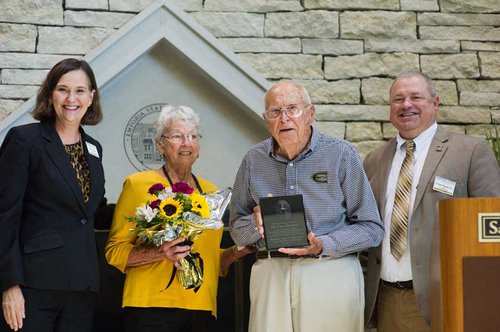
Emporia State University recently named its new Aquatic Research and Outreach Center for Dr. Carl W. Prophet who first experienced Emporia State’s high-impact learning practices more than 60 years ago as a student in biological sciences.
The Prophet Aquatic Research and Outreach Center will be located on the ESU campus adjacent to King Lake in order to provide a learning environment that is a hybrid between the field and the classroom.
The new center, announced in February of this year, will shape the future of Aquatic Ecology and will provide a multitude of opportunities for high-impact learning, student and faculty research, and education outreach to numerous entities including the Emporia community, K-12 students, Kansas Department of Wildlife, Parks and Tourism and U.S. Fish and Wildlife Service.
For Prophet, the new center will continue the work he says captured his interest and got him involved in aquatic biology. That project — what Prophet calls “the beginning of the aquatic program at ESU” — studied the effect of Standard Oil Company’s wastewater treatment on the Verdigris and Fall rivers near Neodesha, Kansas.
Providing high-impact learning opportunities for students was prominent throughout Prophet’s career at the university. He took classes on field trips to lakes, rivers and the Ross Natural History Reservation. Over the years, Prophet and his students worked on groundbreaking projects for the Kansas Fish and Game Department and for the Kansas Soil Conservation Service.
“I believe if a student is interested in science, we have to involve them in an active way,” Prophet said.
The new Prophet Aquatic Research and Outreach Center is an exciting extension of the philosophy of student-faculty interaction Prophet said he experienced on campus since he first arrived in 1953 with his wife, Kay, when his service in the U.S. Army ended.
Prophet earned a bachelor’s degree then finished his master’s degree in 1957. He taught in the biology department for three years. He rejoined the KSTC faculty in 1962 after earning his doctorate, rising to become chair of the Division of Biological Sciences at ESU before retiring in 1996.
